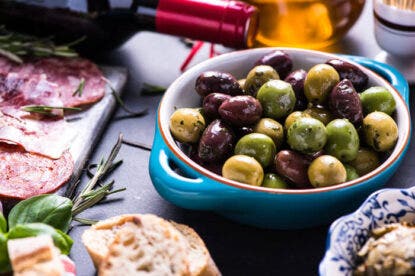From Ozzie and Harriet through Archie Bunker and George Jefferson, protagonists were never shown on TV twirling a glass of wine between their fingers. If it weren’t for Sean Connery’s James Bond sipping Bollinger in his many movies during the 1960s and ’70s, Champagne might still be enjoyed from a fruit cup rather than a flute. And lifestyle magazines for the longest time gave wine the textbook cold shoulder. When stylish couples were photo- graphed, cocktails were always in hand. But where was the wine? Nowhere to be found. You were more likely to see a pictorial or advertisement of some less-sophisticated everyman chugging a beer than you were to find somebody drinking wine. Maybe the Manhattan and the martini were perpetually in vogue, but wine was a lost soldier.
I am not insinuating that wine didn’t exist—it always had its fans. But before the lights of the TV or movie cameras or in front of the photographer’s lens, there was simply no premium wine to be found prior to the 1990s. And it was this out-of-sight-out-of-mind attitude that led to flat, and ultimately declining, wine consumption in the United States by the 1980s.
A few fearless wine marketeers did give it the old college try. Early in the ’80s, when Chablis (not Chardonnay) was the call, the GAMIT brands fought it out over the airwaves. Gallo, Almaden, Masson (as in Paul), Inglenook and Taylor all took their respective cracks at breaking through to consumers over TV. Remember Paul Masson’s “We will drink no wine before its time” slogan? But this type of advertising produced little fruit. After a while these companies halted their spots, no longer willing to throw money at an audience that was largely uncaring about wine.
Then came the big breakthrough, one Sunday evening in 1991. On CBS’s 60 Minutes, correspondent Morley Safer reported on the so-called French Paradox, and how the French and citizens of other Mediterranean countries eat fattier foods than do Americans, smoke more than we do, and even drink more than us—yet enjoy better cardiovascular health than Americans do. Safer trumpeted the benefits of red-wine consumption, and shortly thereafter sales of red wine in the U.S. spiked by about 40 percent.
Almost overnight, wine was not only okay, it was downright hip. Soon TV and film directors as well as print media began including wine in just about every lifestyle scene they staged. A bottle of Pahlmeyer Chardonnay was the defining element in Disclosure, a mid-1990s thriller starring Michael Douglas. Just the other week I saw the Crane brothers on TV’s Frasier battling it out in a blind tasting to be “Corkmaster” of their local wine club. From soap operas to sitcoms, wine is making its appearance. It may have taken a long time, but finally wine has arrived in the mainstream—so much so that today it is the beneficiary of that most potent driver of sales: subliminal and indirect endorsements.
With that I would like to introduce you to the cover story of our annual trade-oriented issue. Beginning on page 30 we take a comprehensive look at the current crop of television and radio shows that are helping to further popularize wine. From educational videos to cooking shows hosted by celebrity chefs to opinionated radio shows, we review wine’s top media outlets.
Media endorsements help sell wine. And so does packaging. On page 52 we look through consumers’ eyes at catchy bottles and labels in the market.
And on page 44 we unveil the new South African wine industry. If there’s any wine country in the world more visually spectacular than the Cape winelands, I’d like to know about it. The scenery from this part of the world is stunning, and this country is poised to be discovered by wine consumers the world over.
Cheers!
-Adam M. Strum
Published: May 1, 2000














